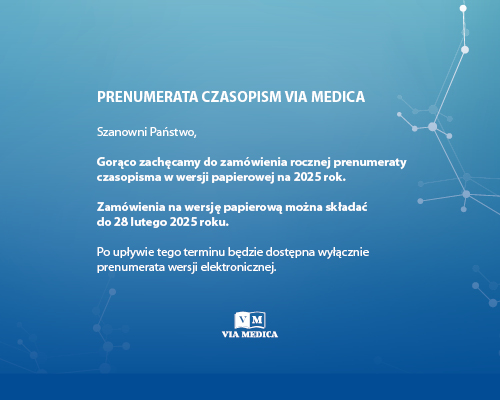Cushing syndrome (CS) is associated with an 18-fold higher risk of venous thromboembolism (VTE), mostly during the active phase of the disease, in the postoperative period after transsphenoidal surgery and adrenalectomy, but also after biochemical remission [1]. Although hypercoagulability in CS is attracting more and more attention, there are still no guidelines regarding a standardized anticoagulation regimen in patients with CS [2].
We present a case of a young woman diagnosed with CS in the course of pulmonary embolism (PE) event management. To the best of our knowledge, in the literature there are 5 cases of patients with CS whose first presentation was VTE [3–6].
A 35-year-old woman with no significant past medical history, on combined oral contraceptive (COC), presented to the emergency department with acute dyspnoea. Laboratory tests showed an elevated D-dimer concentration (1.62 ug/mL, upper reference limit: 0.5 ug/mL). Computed tomography pulmonary angiography revealed peripheral PE (Fig. 1) and incidental left adrenal gland tumour [20 × 27 mm, precontrast 30 Hounsfield units (HU)] (Fig. 2). Clinically, she presented mild arterial hypertension and hypokalaemia. The COC was discontinued, while anticoagulation therapy (rivaroxaban in a dose of 15 mg twice daily for 3 weeks followed by 20 mg once daily) was initiated, along with antihypertensive treatment and potassium supplementation. The patient was referred to an endocrinologist. In the course of further investigation inherited and acquired thrombophilia were excluded.
On the admission to the Department of Endocrinology, the patient revealed that she had noticed a tendency for discrete ankle swelling and increased hair loss for one year. Her laboratory tests showed a tendency for lower potassium concentrations despite potassium supplementation. We performed routine endocrine evaluation of adrenal incidentaloma (the results are shown in Tab. 1). Due to the affected circadian cortisol rhythm with high midnight cortisol concentration and positive 1-mg dexamethasone suppression test (DST), high-dose DST was performed (Tab. 1). Suppressed adrenocorticotropic hormone (ACTH) level and positive 8-mg DST (Tab. 1) suggested ACTH-independent CS. Adrenal CT scan showed a homogenic left adrenal gland tumour (29 × 22 mm, precontrast 23 HU, direct washout index 85.6%, indirect washout index 71.6%). Left adrenalectomy was performed, followed by an initiation of hydrocortisone supplementation. Both anticoagulation and antihypertension treatments were stopped. The function of the hypothalamo-pituitary-adrenal axis did not recover in the 2 years after the surgery. During the last check-up, a short Synacthen test confirmed adrenal insufficiency (Tab. 2).
|
Variable |
Result |
|
Circadian cortisol rhythm [ug/dL] |
|
|
6 A.M. |
17.0 |
|
8 A.M. |
18.6 |
|
12 A.M. |
17.1 |
|
Dexamethasone suppression test [ug/dL] |
|
|
1 mg |
16.4 |
|
2 mg/day for 48 h |
15.8 |
|
8 mg/day for 48 h |
7.2 |
|
Adrenocorticotropic hormone, [pg/mL] |
4.6 |
|
Plasma renin activity [ng/mL/h] |
2.1 |
|
Plasma aldosterone [pg/mL] |
217 |
|
Potassium [mmol/L] |
3.79 |
|
Variable |
Result |
|
Cortisol in short Synacthen test [ug/dL] |
|
|
Before |
0.63 |
|
30 min after |
1.69 |
|
60 min after |
1.97 |
|
Adrenocorticotropic hormone [pg/mL] |
20.2 |
|
Potassium [mmol/L] |
4.25 |
The case illustrates that a VTE episode can be the first, life-threatening presentation of CS. Hypercortisolism should be included in the differential diagnosis of a thrombotic event despite coexisting minor transient factor such as the use of COC. Further multicentre studies are needed to help to understand the hypercoagulability in CS and to set the standards of care.
Funding
The authors have not declared a specific grant for this research from any funding agency in the public, commercial, or not-for-profit sectors.
Consents
Patient consent for publication: obtained.



